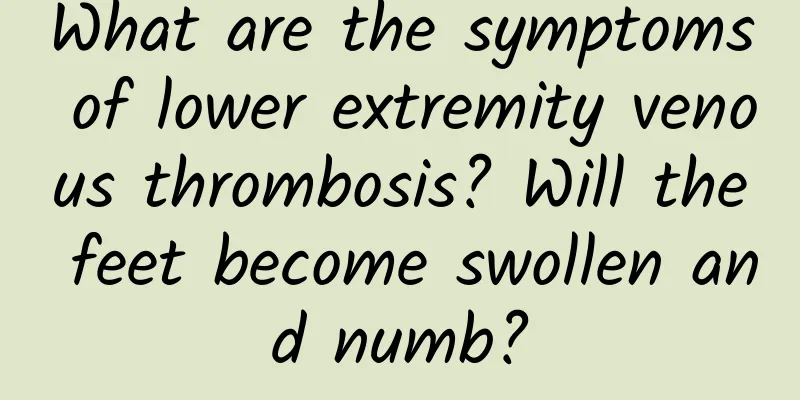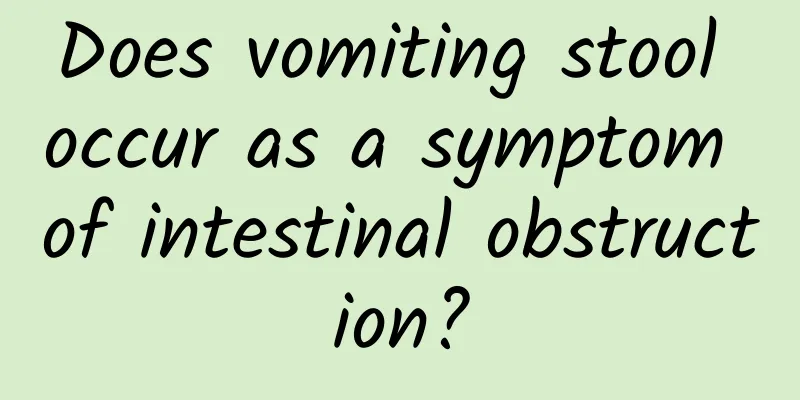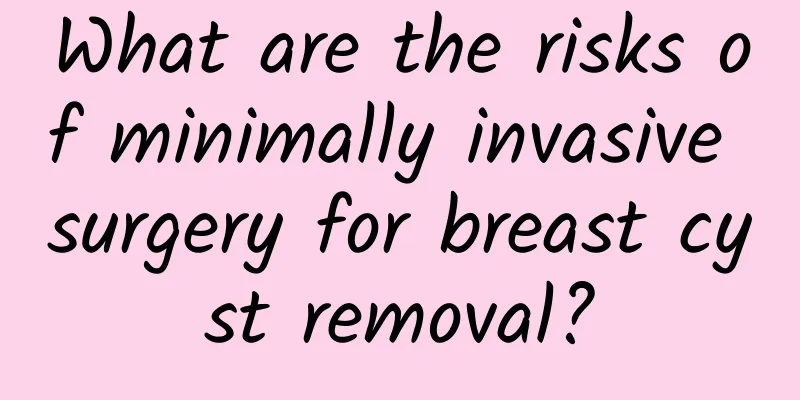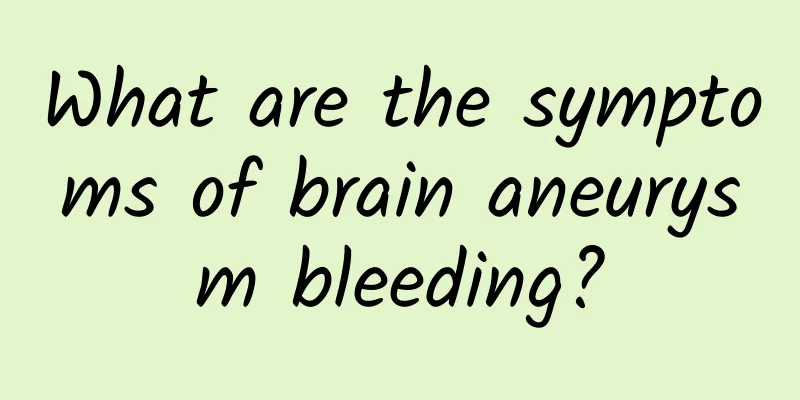What are the symptoms of lower extremity venous thrombosis? Will the feet become swollen and numb?

|
The main symptoms of lower extremity venous thrombosis may include leg swelling, pain, skin discoloration, and localized fever, as well as swelling and numbness in the feet. If these symptoms occur, you should pay close attention and seek medical attention as soon as possible to avoid delays in diagnosis and treatment that may lead to serious complications. 1. Leg swelling The most typical manifestation of lower extremity venous thrombosis is leg swelling, usually one leg is significantly swollen, especially after sitting or standing for a long time. This is because the blood clots block venous return, causing blood stasis in the lower extremities to form edema. You can try to raise the affected limb and wear medical elastic stockings, but this cannot replace medical intervention. It is best to go to the hospital for examination and treatment as soon as possible. 2. Swelling and numbness in the feet Blood clots can compress local tissue nerves, causing swelling and numbness in the feet, accompanied by tingling. Once venous blood flow is severely blocked, this swelling and numbness will continue to worsen and may cause other discomfort. If such symptoms occur, it is not recommended to treat them on your own, and timely examinations such as color Doppler ultrasound are required to confirm the diagnosis. 3. Leg pain Venous thrombosis often causes a sore or dull pain that may spread along the veins at the back of the calf. Symptoms may worsen when walking or exerting force, and may be slightly relieved after rest. However, this pain is not limited to the muscles, but is a deep discomfort caused by the blood clot adhering to the vein wall. In such cases, anticoagulants such as warfarin, rivaroxaban or apixaban can be used under the guidance of a doctor to prevent further development of the blood clot. 4. Skin discoloration and localized fever The skin color of the legs may turn dark red or bluish purple due to the reduction of oxygenated blood supply in the arteries. At the same time, some patients may feel the local skin temperature rise and obvious tenderness when touching the skin of the legs. Applying ice to the affected limb and keeping the area clean may provide temporary relief, but this symptom often indicates the development of the disease, so be sure to seek medical attention immediately. 5. Other manifestations of severe conditions Without prompt treatment, the blood clot may break off and enter the lungs, causing pulmonary embolism, accompanied by symptoms such as difficulty breathing, chest pain, and even fainting. If accompanied by high-risk symptoms, call emergency services immediately. Lower extremity venous thrombosis is a highly dangerous disease. Numbness and swelling in the feet may be one of the early symptoms, but this symptom alone cannot be used to judge the condition. If you have the above symptoms, it is recommended to seek professional medical help as soon as possible to avoid complications. During treatment, you can follow the doctor's advice to use anticoagulants or other necessary measures, and reduce the risk of disease by improving your lifestyle, including avoiding long periods of sitting or standing, maintaining moderate activity, and controlling your weight. |
<<: Can children with ureteral stenosis and hydronephrosis recover after surgery?
>>: The child has a needle-like pain in the heart
Recommend
Does sciatica cause lumbar pain?
Does sciatica cause lumbar pain? When sciatica is...
Can perianal abscess be treated without surgery?
Perianal abscess is a disease that needs to be ac...
Comminuted fracture of patella
Patellar comminuted fracture, this sounds painful...
Can I apply heat to a breast lump?
Heat is generally not recommended for breast lump...
How do breast cysts form?
The formation of breast cysts is mainly related t...
How to treat male cysts
The treatment of male cysts can be divided into d...
How long does it take for anal abscess to heal?
Perianal abscesses generally take several weeks t...
How to treat inflamed breast cysts
Inflammation of breast cysts may require prompt c...
What causes anal fistula in men
Anal fistula in men is usually caused by anal gla...
Dietary considerations after breast cyst surgery
After breast cyst surgery, a proper diet can help...
Can a 15-year-old girl with appendicitis be treated conservatively?
Appendicitis in a 15-year-old girl can be treated...
Scald sequelae and treatment methods
The sequelae of burns may include pigmentation, s...
Does grade 3 breast cyst need treatment?
Grade 3 breast cysts usually require treatment be...
What is the most effective medicine for bladder inflammation?
The treatment of cystitis is mainly antibiotics. ...
How to treat baby cystitis
The treatment of baby cystitis requires taking me...









